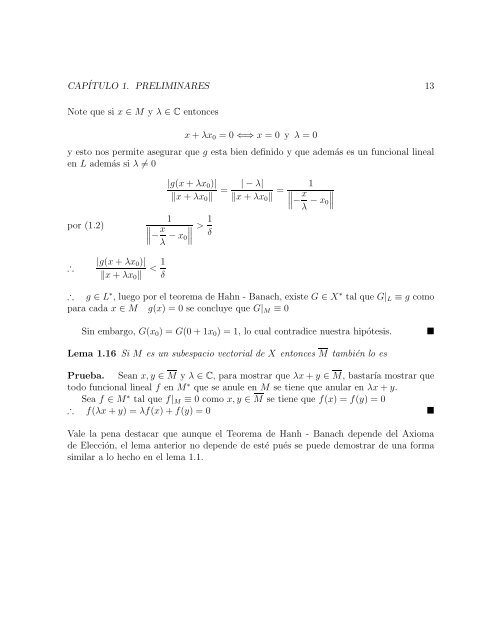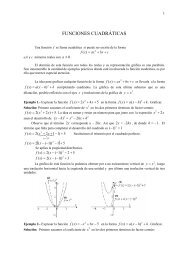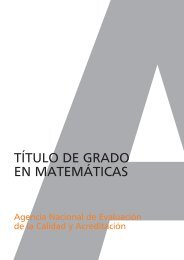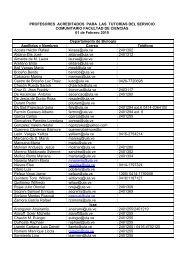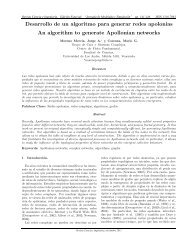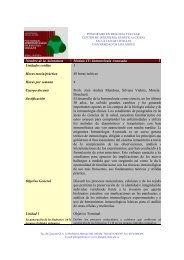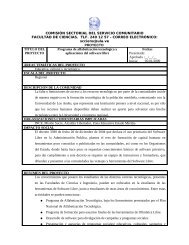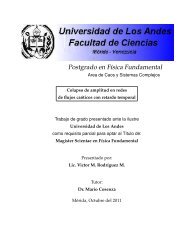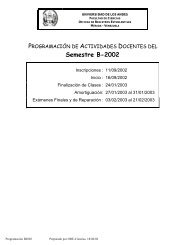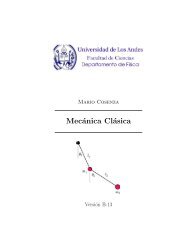El Teorema de Muntz - Szasz - Universidad de Los Andes
El Teorema de Muntz - Szasz - Universidad de Los Andes
El Teorema de Muntz - Szasz - Universidad de Los Andes
You also want an ePaper? Increase the reach of your titles
YUMPU automatically turns print PDFs into web optimized ePapers that Google loves.
CAPÍTULO 1. PRELIMINARES 13Note que si x ∈ M y λ ∈ C entoncesx + λx 0 = 0 ⇐⇒ x = 0 y λ = 0y esto nos permite asegurar que g esta bien <strong>de</strong>finido y que a<strong>de</strong>más es un funcional linealen L a<strong>de</strong>más si λ ≠ 0|g(x + λx 0 )|‖x + λx 0 ‖ = | − λ|‖x + λx 0 ‖ = 1∥∥− x λ − x 0∥por (1.2)1∥∥− x λ − x 0∥> 1 δ∴|g(x + λx 0 )|‖x + λx 0 ‖< 1 δ∴ g ∈ L ∗ , luego por el teorema <strong>de</strong> Hahn - Banach, existe G ∈ X ∗ tal que G| L ≡ g comopara cada x ∈ M g(x) = 0 se concluye que G| M ≡ 0Sin embargo, G(x 0 ) = G(0 + 1x 0 ) = 1, lo cual contradice nuestra hipótesis.Lema 1.16 Si M es un subespacio vectorial <strong>de</strong> X entonces M también lo esPrueba. Sean x, y ∈ M y λ ∈ C, para mostrar que λx + y ∈ M, bastaría mostrar quetodo funcional lineal f en M ∗ que se anule en M se tiene que anular en λx + y.Sea f ∈ M ∗ tal que f| M ≡ 0 como x, y ∈ M se tiene que f(x) = f(y) = 0∴ f(λx + y) = λf(x) + f(y) = 0 Vale la pena <strong>de</strong>stacar que aunque el <strong>Teorema</strong> <strong>de</strong> Hanh - Banach <strong>de</strong>pen<strong>de</strong> <strong>de</strong>l Axioma<strong>de</strong> <strong>El</strong>ección, el lema anterior no <strong>de</strong>pen<strong>de</strong> <strong>de</strong> esté pués se pue<strong>de</strong> <strong>de</strong>mostrar <strong>de</strong> una formasimilar a lo hecho en el lema 1.1.


